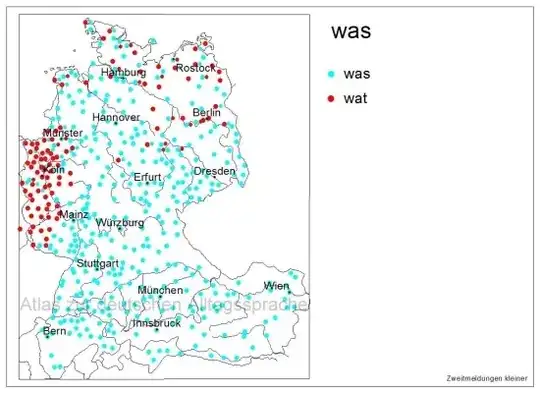As others have already stated, it has nothing to do with James Watt or the SI-unit Watt. It is merely a dialectal pronunciation of was.
Historically, this difference derives from the High German Consonant Shift.‡ Proto-Germanic had a plosive sound /t/ at the end of the words which would turn into es, das and was. This sound shifted in High German to become /s/. The shift has been dated to around 600 AD according to Wikipedia. Since the shift only affected High German, other Germanic languages such as English (it, what), Dutch (het, het, wat) or Swedish (det, -(e)t, vad).
Therefore, wat should be the usual dialectal Form in the northern part of Germany, Luxemburg and Belgium while was should be the usual dialectal form in the southern part of Germany, Austria, Switzerland, Liechtenstein, Italy and France; both of them separated by the St. Goar line. (Only areas where German is spoken as a minority language for Italy/Belgium/France.) However, a map from the Atlas der deutschen Alltagssprache shows how far northwards the southern form has reached to date:

You can still see the St. Goar line in the very West but it has disappeared when leaving the Rhine area eastwards. However, when speaking their traditional dialects, people North of the St. Goar line will always use wat.
The Atlas der deutschen Alltagssprache is a survey-based attempt to research the colloquial use of German across the German-speaking area. It does not attempt to capture only dialects or only standard German but rather the language actually spoken — often a mixture between ‘pure’ dialect and ‘pure’ colloquial standard German. (Thanks to Chirlu for reminding me to point that out.)
‡: It’s not entirely correct to say that was is Upper German while wat is Low German. Low German is usually defined as northwards of the Benrath line which separates the pronunciations of to make (maken in the North, machen in the South) and Upper German (sometimes unclearly called High German) usually as southwards of the Speyer line which separates the pronunciations of apple (Appel in the North, Apfel in the South). The St. Goar line separating was and wat is in-between these two, in the area usually called Central German. It does separate a number of dialects from each other, most notably the group of Rhine Franconian from Moselle Franconian.
All Low German dialects will use wat and all Upper German ones was, though.

